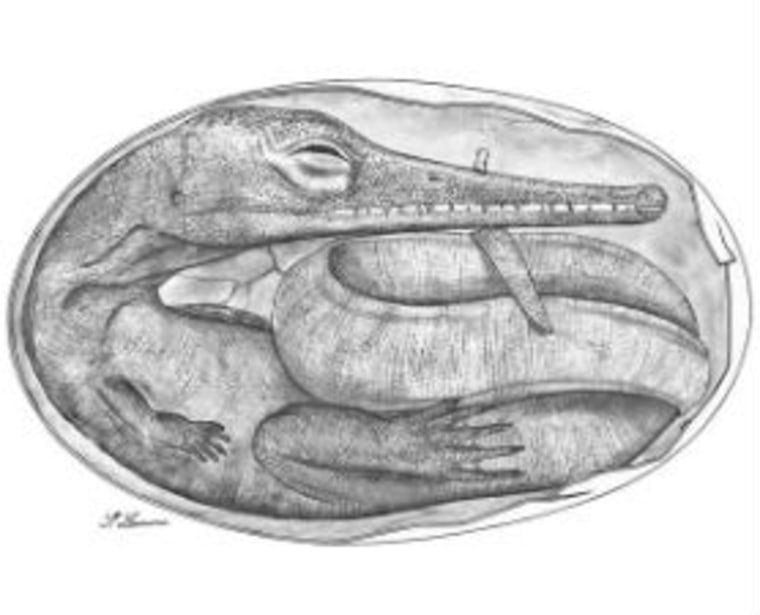Producing living young, and not external eggs, is a form of birth that could date back to 280 million years ago or even earlier, a new study suggests.
Called viviparity, this form of birth is used by humans, but clearly we were far from being the first to evolve it.
The study, published in the December issue of Historical Biology: An International Journal of Paleobiology, focuses on mesosaurs, which were among the world's first aquatic reptiles. They lived in what are now South America and South Africa at a time when these two landmasses were united and part of the giant supercontinent Pangaea.
PHOTOS: Oldest Dinosaur Nursery Found
Mesosaurs, and even their earlier ancestors, possibly "were not able to produce hard-shelled eggs, at least for the first several million years of their evolution," lead author Graciela Piñeiro, a paleontologist at Uruguay's Facultad de Ciencias, told Discovery News. "After the recent discovery of mesosaur embryos, we can state with a high degree of confidence that embryo retention developed early in amniote evolution, given that mesosaurs are among the basal-most reptiles and that they date from the Early Permian around 280 million years ago."
Piñeiro and colleagues Jorge Ferigolo, Melitta Meneghel and Michel Laurin recently discovered the exceptionally well-preserved mesosaur embryos at sites in Uruguay and Brazil. The environmental conditions at the locations allowed for the preservation of soft tissues, nerves and blood vessels, she said.
Giving birth in this manner and laying eggs each come with advantages and disadvantages. Eggs with hard, mineralized shells, such as those associated with today's chicken eggs or those of dinosaurs, are believed to help reproduction on dry land. But many terrestrial animals, including humans, do not lay eggs, so there must be other benefits to viviparity.
"We think that the retention of the eggs may have appeared in amniotes as a useful strategy to avoid predation and increase survivorship chances for the embryos," Piñeiro said.
NEWS: Ancient Images of a Mother Giving Birth Found
Parental care often then follows. There is even some evidence that mesosaurs provided such care, because adults and juveniles have been associated together in the fossil record.
At least some mesosaurs even had the added challenge of giving birth and raising young in extremely salty water.
"In Uruguay, mesosaurs may have first colonized the shallow water environment of the Mangrullo Formation, which under the establishment of arid climatic conditions that increased evaporation became like a salty marsh where just a few opportunistic organisms could tolerate the anoxic bottom conditions generated by the accumulation of high amounts of organic matter," Piñeiro explained.
When infant mesosaurs entered the world, they possibly even had a salt gland and other anatomical adaptations already in place, allowing them to survive the otherwise challenging conditions.
There is also compelling evidence that giant, carnivorous, four-flippered reptiles known as plesiosaurs gave birth to live young as well. Robin O'Keefe of Marshall University and team discovered a big embryonic marine reptile contained in the fossil of its 15.4-foot-long mother, which lived 78 million years ago.
NEWS: Nest Full of Baby Dinosaurs Found
"The embryo is very large in comparison to the mother," O'Keefe said, "much larger than one would expect in comparison with other reptiles. Many of the animals alive today that give birth to large, single young are social and have maternal care. We speculate that plesiosaurs may have exhibited similar behaviors, making their social lives more similar to those of modern dolphins than other reptiles."
There is one disturbing side-note to such prehistoric pothering: cannibalism.
"Intriguingly, cannibalism is more frequently found in reptiles that are viviparous and develop parental care and social behavior," Piñeiro said.
She and her colleagues are continuing to study viviparity in the fossil record. A paper touching on the connection between mesosaurs and terrestrial animals is forthcoming.
